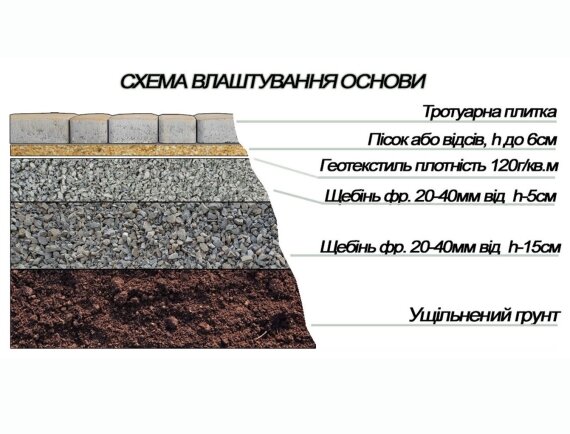
1) The first stage of the process of laying paving slabs is the preparation of the project, which should contain: - dimensions of the paving area; - determination of load on the surface; - drainage conditions (longitudinal and transverse slopes); - type of tile and its configuration, colors and quantity, paving plan and installation method. 2) Thickness and type pavement tiles is selected in dependencies from load on her. h=3 cm and h=4 cm for the pedestrian zone, for cars h=5 cm and more. 3) The territory is planned, slopes for water drainage are determined. 4) The site on which the pavers are installed is leveled and compacted with a vibratory rammer, roller. 5) Crushed stone is poured onto the compacted soil. pillow thickness from 15 cm (crushed stone fr 20-40, wedged with crushed stone fr 5-10) and compacted. If the pavement is subject to heavy traffic, then the crushed fraction and the thickness of the cushion should be increased, concreting of the base is also possible. Everything depends on the technical project. 6) The crushed floor is covered with up to 3 cm of screening or washed sand. This layer levels the surface and wedges a crushed stone pillow. 7) Paving tiles are mounted on the prepared base, the seams between the tiles should be sprinkled with washed sand. 8) The seam (indent) between adjacent tiles acts as a shock absorber, when the is loaded or frozen, the tile moves (plays). If laying pavers too tightly, then in the process of exploitation chips on the edges and corners of concrete elements are possible. 9) In case of insufficient sealing or lack of drainage (in the form of slopes and trays) the base will sag, the load vector shifts, the tile abuts the upper part one against the one and is chipped. Depending on the loads or the looseness of the soil, the technical conditions change. And remember, that violation of paving technology leads to damage of concrete elements, instability of the surface, rapid wearing. Responsibility for technology styling carries paver pavement tiles.